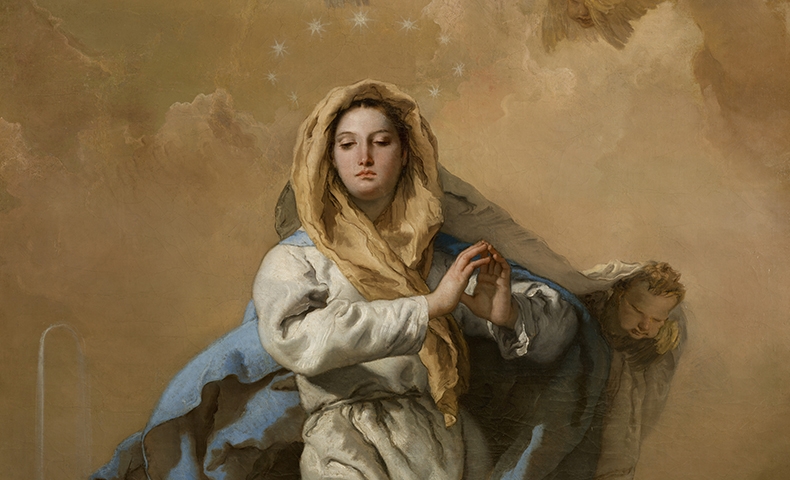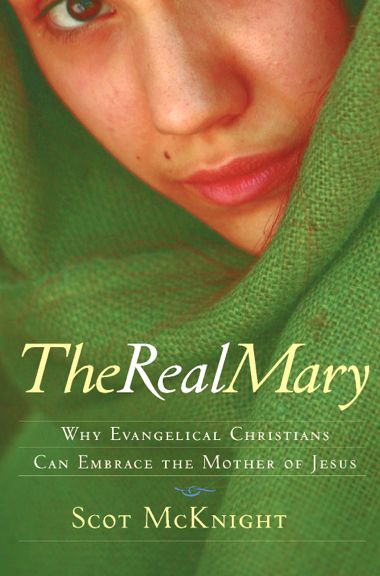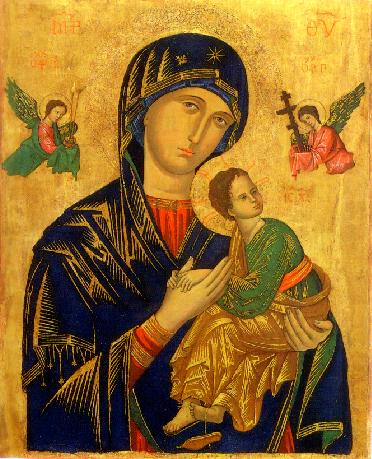The Immaculate Conception of the Blessed Virgin Mary is one of the most unique of all Catholic dogmas, not only theologically and historically, but also socially and psychologically. The dogma’s wide-spread application reaches far beyond mere dry theological formulas as it affects the deepest human beliefs and sentiments. Since its theology encompasses the essence of various key aspects of Christianity, one could consider the Immaculate Conception a Christian super-dogma from which all the other theological concepts could be derived.
When it was proclaimed by Pope Pius IX on the 8th of December, 1854, instituting a great new feast, it was hailed and welcomed by the whole Catholic world as the ultimate spiritual and theological triumph of the Roman Catholic Church, and its implications affected all Christianity.
Sentiments about female sacredness, motherhood and virginity appeared in other cultures, be it the ancient Greek mythology, Roman vestal virgins, or Buddhism, but they reached their pinnacle in Christianity. Medieval chivalry and knighthood, even the English Elizabethan virginity cult, are considered the direct outgrowth of the early medieval Blessed Virgin devotion. In fact, the oldest known artifacts were the pre-historic female fertility or motherhood cult statues. One the oldest known artifacts, estimated to be almost 30,000 years old, is a small statue called the Venus of Vestonice found in Moravia in Central Europe, near the Slovak border. The statue was made by a European Paleolithic culture, perhaps the mammoth hunters. Even more intriguing than the statue itself is a fingerprint of a child found in the ceramic, adding to the mystery of its use and purpose. (As G. K. Chesterton pointed out in his Everlasting Man, not tools but art is the defining feature of man.)
 In a nutshell, applying our basic common sense, the dogma is about the supernatural holiness of the Blessed Virgin: God, the most holy and sacred of all our concepts or ideas, simply could not have been born of a mother less holy. This sentiment has been expressed since the earliest days of Christianity and it survives in Christmas carols of all nations, which were, in many cases, an expression of the shepherd and peasant cultures in which some of Christianity developed. This devotion of the common people was echoed by their Christian rulers. A number of European kings and queens held the same belief, they built churches and shrines dedicated to the Blessed Virgin, some even petitioned the Holy See to finally declare the Immaculate Conception as an article of faith.
In a nutshell, applying our basic common sense, the dogma is about the supernatural holiness of the Blessed Virgin: God, the most holy and sacred of all our concepts or ideas, simply could not have been born of a mother less holy. This sentiment has been expressed since the earliest days of Christianity and it survives in Christmas carols of all nations, which were, in many cases, an expression of the shepherd and peasant cultures in which some of Christianity developed. This devotion of the common people was echoed by their Christian rulers. A number of European kings and queens held the same belief, they built churches and shrines dedicated to the Blessed Virgin, some even petitioned the Holy See to finally declare the Immaculate Conception as an article of faith.
However, the official declaration of the dogma was delayed, partly based on objections raised, even by the best Catholic theologians, including the most authoritative St. Thomas Aquinas and many learned Dominicans. They did not deny the reality of Mary’s sinlessness, but could not theologically reconcile the fact that a human being without the stain of the original sin would be in need of Christ’s redemption, since Christ came to redeem all human beings, including the Blessed Virgin Mary.
Underlining its controversy, the Immaculate Conception has a long and convoluted history which isn’t easy to tell in a few paragraphs. However, since the earliest days of the Eastern Christianity the Theotokos, or the Mother of God concept, affected and defined the core concepts of Christianity resulting in various theological disputes and quarrels, condemnations of various heresies, and, ultimately, all these disputes culminated in the great schisms of Christianity, be it the original Great Schism between the Eastern and Western Christianity, or, later, the Reformation.
The apparitions of the Blessed Virgin at Lourdes in 1858 to a humble shepherd girl are considered the ultimate supernatural confirmation, an indisputable revelation beyond logic and theology, by which Virgin Mary herself approved of the dogma. The much beloved saint, St. Bernadette, still serves as an inspiration to millions who come to Lourdes to experience a touch of the supernatural, and her fascinating story deserves its own re-telling.
Since this is the 500th year of Luther’s Reformation, I would like to say a few words about the effects of the Reformation with respect to the attitude and sentiments about Virgin Mary. Scholars seem to agree that Luther presumably upheld the doctrine of the virginity of Mary, and that his objections were strictly against the lofty artistic depictions of Mary. One of the most distinguished and authoritative is the late Yale professor Jaroslav Pelikan (1923-2006). Born into a family of a Lutheran pastor of Slovak origin, Pelikan, a man of much learning, summarized Luther’s attitude in these words:
“Therefore when he criticized medieval painters of the Virgin Mary, it was not for doing violence to the literal meaning of the Gospels by picturing her in modern dress and in contemporary setting, but for depicting her in such a way ‘that there is found in her nothing [lowly] to be despised, but only great and lofty things’; what they should have done was, as she herself had said in the Magnificat, to show ‘how the exceeding riches of God joined in her with her utter poverty’.” [1]
I have great respect and admiration for Doctor Pelikan’s enormous learning and scholarship. We met in year 2000 after he delivered a lecture at the University of Alberta introducing the Anno Domini exhibit held at the Provincial Museum in Edmonton. (This exhibit was considered the most important Canadian commemoration of the Great Jubilee of the year 2000.) Both of us being of Slovak descent we had a very cordial ten minute conversation.
Nevertheless, I simply cannot accept Doctor Pelikan’s simplistic summary of the problem which was likely motivated by his desire for ecumenism and peaceful inter-faith dialog. Even at the strictly artistic level of this argument, I don’t see how the Madonnas painted by Albrecht Dürer or Lucas Granach are in any way superior to the rich “lofty”and noble Catholic art found in many European Catholic Churches. If the Protestant artists indeed tried to fulfill Luther’s mandate, how does one artistically depict God’s exceeding power and riches emanating from the Blessed Virgin’s poverty? And, really, should an artist be even attempting to depict anything lowly and “despicable” in a human being so sinless, pure and noble?
 The truth, of course, is, that there is a lot more to be said about the Reformation – its iconoclasm and destruction of art, including many noble images of the Blessed Virgin so revered by the masses of people, Luther’s foul language, his inexplicable lapses into desperation and madness, his blatant contradictions and inconsistency in reasoning, Luther’s misunderstanding of the sacredness of marriage, even his furious attacks on virginity and chastity itself. One cannot but conclude that a lot of the modern coarseness, be it the quasi-scientific physiological arguments, or the vile jokes of vulgar stand-up comedians, is the direct result of such theologically confused rhetoric propagated by the Gutenberg’s press that swept across the world after the Reformation.
The truth, of course, is, that there is a lot more to be said about the Reformation – its iconoclasm and destruction of art, including many noble images of the Blessed Virgin so revered by the masses of people, Luther’s foul language, his inexplicable lapses into desperation and madness, his blatant contradictions and inconsistency in reasoning, Luther’s misunderstanding of the sacredness of marriage, even his furious attacks on virginity and chastity itself. One cannot but conclude that a lot of the modern coarseness, be it the quasi-scientific physiological arguments, or the vile jokes of vulgar stand-up comedians, is the direct result of such theologically confused rhetoric propagated by the Gutenberg’s press that swept across the world after the Reformation.
Objections of atheists and various Protestants usually attack the virginity of Mary, since their narrow-minded physiological or biological skepticism cannot conceive how it might have been possible that the Virgin could be with a child, bear a son and name him Immanuel (Isa 7:14). The jokes of demented comedians, who in any previous age simply would have been punished, locked-up in an asylum, or shunned as village idiots for their sacrilegious stupidity, are best left unanswered, since their mocking serves no purpose except their own foolish self-gratification.
No wonder some such tracts were burned by the outraged people, or by the Czech Jesuits during the Counter-Reformation. However, the previous claims, still cited today, are grossly exaggerated. For example, it is still cited in outrage that the Czech Jesuit Antonín Koniáš or Koniasch (1691-1760), a highly educated theologian, an ascetic, and an excellent popular preacher who preached in several languages, sometimes five sermons a day, burned in excess of 60,000 Protestant books. According to the latest careful research Koniáš collected about 30,000 such books and tracts, and some of these were burned. It is usually omitted that many of these confiscated books and pamphlets were of crude erotic nature or plain pornography.
Despite the immense advances in biology and physiology, modern science still cannot explain how the supernatural virginal birth of Christ could have occurred. On the contrary, the discoveries of new sciences, especially the new vistas opened by genetics, rather complicate the matters and mystify the unexplainable, even more, validating St. Augustine’s conclusion that “in such things the whole ground of the mystery is the might of Him who permits it to happen.”
Protestantism in its various forms and sects spread all over Europe, and the Counter-Reformation tried to curtail some of these pernicious ‘progressive’ trends and influences. Nowhere was this more apparent than in the land of the original reformation, in Bohemia, where due to its deeply rooted pre-Hussite tradition of tolerance and humanism many of these sects were allowed to settle and flourish.
It is no coincidence that the honor of holding the book from which Pope Pius IX declared the dogma of the Immaculate Conception is attributed to the Czech-American saint John Nepomucene Neumann, who was invited by the pope to be present during the solemn declaration. St. Neumann, a learned theologian who spoke seven languages, understood history and the need for the dogma. Even before his departure for Rome in 1854, as the bishop of Philadelphia, St. Neumann issued a pastoral letter on the Immaculate Conception: “Henceforth and forever, all generations of true believers shall invoke Mary, Mother of God, as the ever immaculate virgin, conceived without stain of original sin.”
On his return trip from Rome, after twenty busy years in America, St. Neumann came to visit his birthplace, the town of Prachatice in Southern Bohemia, where he was triumphantly received as a hero, leaving behind numerous relics and the message of the devotion to the Immaculate Conception. (Curiously, Prachatice is only 1 mile south of the famous village Husinec, where John of Husinec or Hus, the first European reformer, was born.)
Nevertheless, Protestantism, mainly Lutheranism and Calvinism, remained strongly entrenched in many middle-class towns in Bohemia, Slovakia and Hungary. My own grandmother Irene, a very kind, peace-loving and educated woman, was brought up as a Lutheran in such a religiously divided town in Southern Slovakia. While she never converted to Catholicism, she made sure her children were educated and brought up in the Catholic faith. Her final motherly advice to my mother was to make sure to marry a good Catholic young man. Until the end of her life my grandmother faithfully attended the weekly Lutheran services, but there must have been something essential missing in her deep spiritual life which Lutheranism could not provide. For many years, every weekday during her lunch-break, (she worked as the chief accountant for the local power company), she walked across the town square to the Catholic church where she knelt and prayed before the statue of the Blessed Virgin Mary.
I don’t know the motives for Doctor Pelikan’s surprising conversion to Eastern Orthodoxy in 1998. Perhaps he agreed with Dostoyevsky’s criticism that Catholicism was transforming itself into idolatry, while Protestantism was rapidly changing into atheism and variable ethics. But I still gently smile whenever I imagine Doctor Pelikan bowing and kneeling before a magnificent gold-plated Byzantine icon of Theotokos, the Queen of Heaven.
Peter Hála was born and educated in former Czechoslovakia. In 1980 his family managed to escape the communist regime and came to Canada. He works at the University of Alberta in the area of automation and control systems. His interests and hobbies include history, philosophy, literature, translation, music and various outdoor pursuits. –
References:
[1] Pelikan, Jaroslav. Jesus Through the Centuries: His Place in the History of Culture. Yale Univerity Press, 1999, p. 161.


